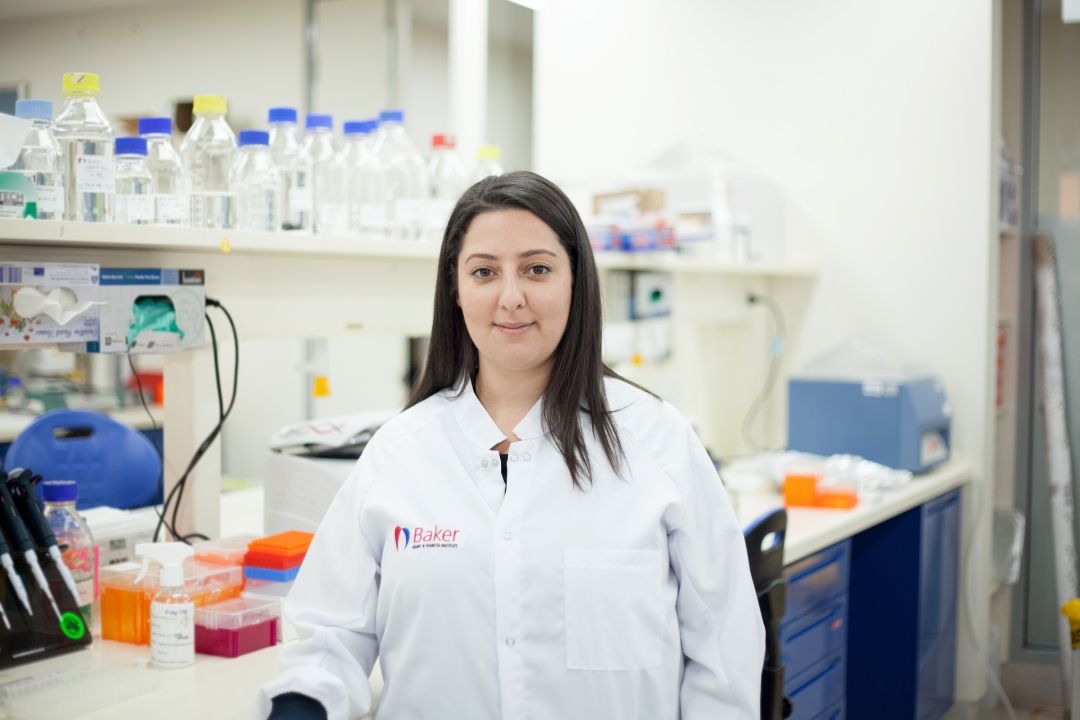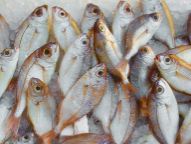Chief Scientist rounds up five stories to inspire young female scientists

Swinburne science students hard at work in the university's laboratory facilities.
In summary
- Swinburne’s Chief Scientist Professor Virginia Kilborn shares five inspiring stories this International Day of Women and Girls in Science
- Many school programs see Swinburne staff and students foster a love of science in young girls
- Swinburne graduates in industry and researchers at the university are leading the way when it comes to women's participation in science
What better time to celebrate the many successes and initiatives from Swinburne’s talented women in science than International Day of Women and Girls in Science?
Swinburne’s Chief Scientist Professor Virginia Kilborn says, “There has never been a more important time to be involved in science. Science can help us solve the world’s greatest challenges, and women and girls will play an important party in driving us towards a more optimistic future.
“We’re doing a lot of work at Swinburne to increase women’s participation in science, from engaging with young kids to our PhD and early career researchers to our female leaders and role models.”
From the many stories we could tell, here are just five to show some of the great work being done across the university to advance our women scientists… and grow more.

Bees are tracked using high-tech micro-sensors that look like backpacks. Image credit: CSIRO.
How science becomes your favourite subject
Smart bins, bees with backpacks and drones… it’s clear that much fun was had again in 2021 by the Knox Innovation Opportunity and Sustainability Centre (KIOSC) – a joint initiative between Swinburne and local secondary schools.
Year 9 and 10 students took on KIOSC’s TrashBot Challenge to develop smart bins for better waste management. Kids from Nathalia Secondary College in regional Victoria learned how to control drones and prototype programming codes. The best pictures came from the Bees with Backpacks program, which saw high school students help save local bees. Scientists fit the bees with high-tech micro-sensors (which happen to look like cute little backpacks), students helped analyse the data.
These programs were sure to inspire a love of science and technology in many local high school students. Hopefully we see them on a Swinburne campus in the years to come!

Swinburne’s Debatri Chattopadhyay and Isobel Romero-Shaw from Monash University – who are both completing their PhDs in astrophysics with OzGrav – have created a colouring book to encourage more girls to become scientists.
The colouring book for budding scientists
A love of science can start young. Swinburne’s Debatri Chattopadhyay knows this better than most, having grown up with two scientist parents. Now, she does simulations on supercomputers of dead stars in binaries or in massive collections of other stellar systems, called globular clusters. As if that wasn’t enough work, last year she created a colouring book of women physicists to help children learn about the colourful lives and brilliant minds of these amazing scientists. She was also selected for Homeward Bound, a global program designed to provide cutting-edge leadership training to 1,000 women in STEMM over 10 years. To raise awareness of climate change, this journey will take Debatri all the way to Earth’s frozen desert, Antarctica.

Both the winning and runner up teams came from Viewbank College in 2021.
Space-loving students find milky way to grow yoghurt in orbit
High school students from across Victoria boldly grew where no students have grown before, sending bacteria on a SpaceX rocket to the International Space Station to test the possibilities of creating yoghurt in space. The experiments are part of the Swinburne Space Youth Innovation Challenge, which asked students to design and develop an experiment that could efficiently help improve astronaut health and wellbeing by growing good bacteria in space. In 2021, the winner was an all-girl superstar team from Viewbank College – who were then selected to help send the experiment to space.

Gabriella Farrugia is enjoying working as a research assistant at the Baker Heart and Diabetes Institute.
Swinburne students take their science skills beyond the classroom
There are always many great student placement, internship and career success stories to share – it’s hard to pick just one. But Gabriella Farrugia exuded passion for her one-year paid placement as part of her Bachelor of Science majoring in Biotechnology and Chemistry. In fact, she enjoyed it so much that she has worked in research labs ever since.
Gabriella currently works as a research assistant within the Cardiac Cellular Systems Lab at the Baker Heart and Diabetes Institute within the Alfred Hospital. She manages projects and conducts experiments to analyse how heart cells differ in healthy men and women, compared to those with any disease.

Medical technology startup Cue Sleeve was born from Deepa's biomedical engineering PhD research and was a finalist in Swinburne’s 2020 Venture Cup.
Science start-ups find a way forward
Medical technology start-up NovaSense Biomedical was born from Deepa Prabhu’s biomedical engineering PhD research. The start-up produces the Cue Sleeve – a motorised, wearable sleeve that provides motion guidance for people with vision impairment. Built as a rehabilitation tool, it can also be used for general assistance in day-to-day lives.
Last year, students from the Master of Entrepreneurship and Innovation stepped in to help Deepa and her co-founder Computer Science and Software Engineering Senior Lecturer, Dr Chris McCarthy, to find ways to commercialise the much-needed invention. Stacey Lauricella, a senior manager for the financial services firm Pitcher Partners, is one of the students who worked on the Cue Sleeve project. She predicts that they accelerated Deepa’s journey by two years.
-
Media Enquiries
Related articles
-

- Technology
- Science
- Engineering
Victorian students drive green energy transition through international hydrogen competition
Swinburne’s KIOSC, in collaboration with Horizon Educational and Gippsland Tech School, co-hosted the Hydrogen Grand Prix in Melbourne.Friday 26 July 2024 -

- Science
Skin, scales and fish tails: using collagen to turn fish guts into gold
New research from Swinburne could transform the sector by converting high value collagen proteins from seafood by-products into cosmetics, food, and pharmaceuticals.
Tuesday 02 July 2024 -

- Science
- Engineering
Submarines in the future could self-identify cracks and self-heal thanks to Swinburne researcher
Thanks to the work of Dr Nisa Salim from Swinburne University of Technology’s School of Engineering, future submarines could self-identify microcracks and self-heal using a new kind of carbon fibre reinforced polymer composites.
Monday 17 June 2024 -

- Science
Inaugural Swinburne-CSIRO Indigenous Research Fellow joins national water quality forecasting project
Swinburne University of Technology has appointed spatial ecologist Associate Professor Sally Waller as its inaugural Swinburne-CSIRO Indigenous Research Fellow...
Thursday 13 June 2024 -

- Social Affairs
- Health
Swinburne leads world-first medical cannabis driving trial
Swinburne researchers are spearheading a world-first trial to evaluate whether patients can drive safely while on prescribed medical cannabis
Tuesday 28 May 2024

